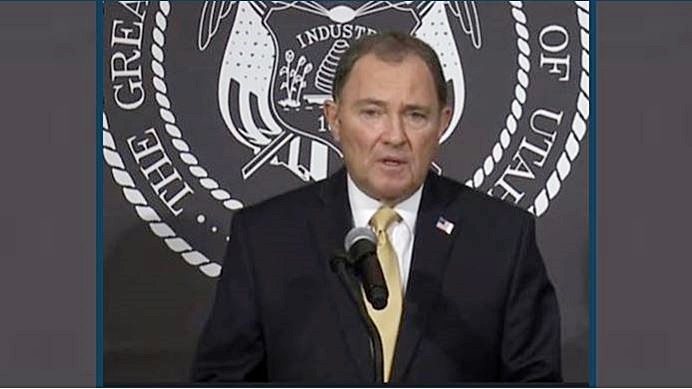SALT LAKE CITY, Utah, May 14, 2020 (Gephardt Daily) — Utah Gov. Gary Herbert announced Thursday that most of Utah will change from the COVID-19 orange stage to yellow on Saturday.
With the move from orange (moderate risk) to yellow (low risk), restrictions will be loosened, with measures in place to lessen the spread of the virus. Social distancing and masks are still strongly recommended, Herbert said.
Areas that will remain in the orange category because of their greater numbers and/or concentrations of COVID-19 cases are:
- Salt Lake City
- West Valley City
- Summit County
- Wasatch County
- Grand County
When case numbers in those areas decrease and stabilize, they will be transitioned to yellow, Herbert said.
Answering a reporter’s question at the news conference, Herbert said the state is prepared for a surge in cases as the state “reopens,” but officials are hopeful that will not happen.
“We would hope people would use caution and common sense, and be careful in their actions,” he said. “This is not an on-off switch, as I’ve said before, this is really kind of moving the dial incrementally as we in fact open up the economy. So it’s a slow opening of the valve, and I think people ought to address it in that same kind of context.
“Yes, we are prepared, and one of the things we’ve worked very hard at, very diligently, is that we do have healthcare opportunities, and if we do have a surge, our healthcare system will not be overwhelmed.”
Herbert said officials have learned “sad experience” elsewhere that reopening too soon is a major cause of fatalities and disease spread.
“We have significant head room with our hospitals and our healthcare systems, significant ICU beds and just a minimal amount, probable around 10 percent utilization, of our ICU beds for the coronavirus. So we’re prepared. We would hope if we handle this right, we would not have a surge… but if it happens, we’re prepared.”
Gatherings of 20 people currently are allowed. That number will increase to 50. Summer sports activities will be allowed, with social distancing required for spectators and guidelines to be announced for participants.
Pools will reopen with guidelines in place, and schools will remain closed, but driver’s ed classes for students will be available, among other changes, Herbert said.
Those at most risk, including people 60 or older, those with diabetes, heart disease or liver problems, and the obese, remain at highest risk of hospitalization and even death should they become infected with COVID-19.






